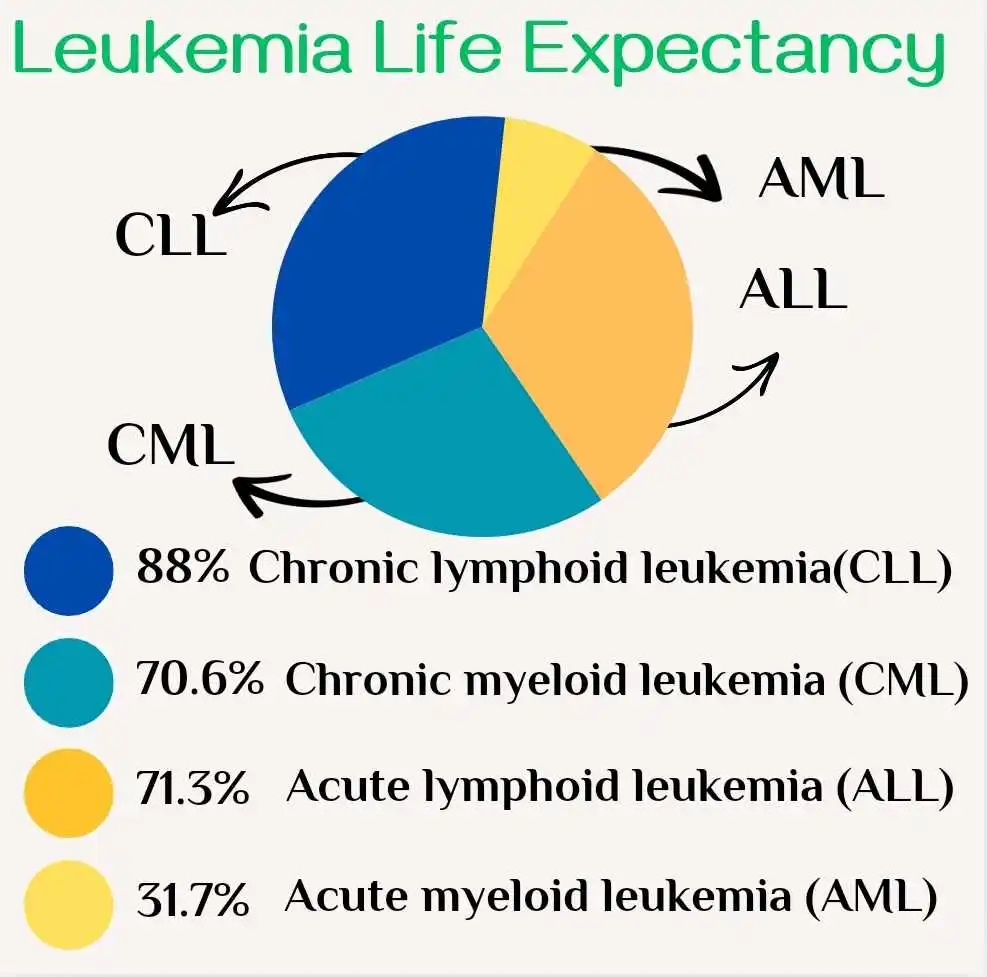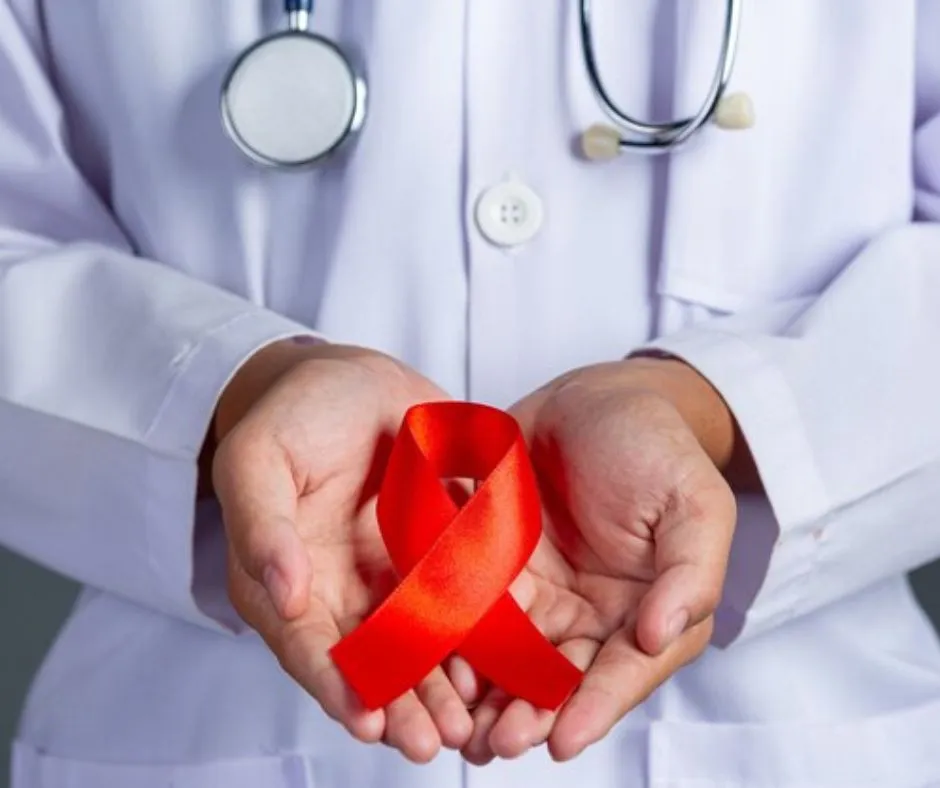Early signs of Leukemia in blood work are pivotal in the timely diagnosis and management of this serious condition.
Leukemia, a type of cancer that affects the blood and bone marrow, frequently appears as mild abnormalities that can be discovered by routine blood tests.
This article emphasizes the significance of early detection of leukemia in blood work, underlining the need for fast medical action and improved patient outcomes. Continue perusing!
Early Signs of Leukemia
Leukemia is a type of malignancy resulting from genetic mutations in the precursor bone marrow stem cells that produce white blood cells.
Moreover, Leukemia is classified into the two branches based on the type of blood cells involved, as follows:
- Lymphoid cells, which produce lymphocytes cells.
- Myeloid cells, which generate granulocytes such as neutrophils, eosinophils, basophils, and monocytes.
Additionally, myeloid cells produce red blood cells and platelets.
Depending on its growth rate, leukemia can be categorized as either:.
- Acute, that includes rapid growth of immature cells.
- Chronic, which progresses slowly and consists of mature cells.
As the result, there are four types of leukemia:
- Acute lymphocytic leukemia (ALL).
- Acute myeloid leukemia (AML).
- Chronic lymphocytic leukemia (CLL).
- Chronic myeloid leukemia (CML).
To confirm a diagnosis and develop a treatment plan strategy, your oncologist physical examination followed by certain and specific blood tests.
Blood work that used to diagnose leukemia, including:
- Complete blood picture.
- Peripheral blood smear.
- Immunophentoype test.
- Karyotyping test.
Complete Blood Picture
Complete blood picture(CBC) is the first analytic test to diagnose leukemia, the results including:
- White blood cells count and the presence of abnormal cells.
- Red blood cells count and any disturbance in its count.
- Hemoglobin levels and blood indices.
- Platelets count.
Peripheral Blood Smear
Examination of blood smear under microscope is required to detect morphological abnormalities of white blood cells, especially immature cells.
According to the results of complete blood picture and peripheral blood smear, the doctor can determine primary diagnosis of leukemia as follows:
- Acute lymphatic leukemia characteristics by increasing numbers of immature lymphocytes cells known as lymphoblasts.
- Acute myeloid leukemia presents with pancytopenia, which is a hematological issue where the bone marrow fails to produce all types of blood cells, including red blood cells, white blood cells, and platelets.
- The other two types of leukemias, chronic lymphoid and myeloid, show results indicating the presence of mature cells close to normal ranges with fewer signs of abnormalities compared to acute leukemias.
Immunophentoype Test
If early signs of leukemia in blood work are not detected by other types of leukemias, immunophenotype test becomes essential for diagnosing chronic lymphoid leukemia, particularly there is an increase in lymphocytes count.
This test is performed using blood samples or bone marrow by using a device called flow cytometer.
Immunophenotype test measures the numbers of lymphocytes cells with specific characters including size, shape, and presence of particular markers on its surface.
To diagnose chronic lymphoid leukemia, the test requires the presence of at least 5000 abnormal lymphocytes cells per microlitre of blood.
Karyotyping Test
It is a genetic test used to analyze cells from samples taken from blood, bone marrow, or tissues to detect the shape, size, and numbers of chromosomes.
Any disturbance in numbers and structures of the chromosomes lead to medical issues including leukemia, especially chronic myeloid leukemia.
According to the karyotyping test results, doctors can identify Philadelphia chromosome, an abnormal chromosome formed due to abnormal translocation between chromosome 9 and 22 during cell division.
According to studies that show, about 90% of patients with chronic myeloid leukemia have Philadelphia chromosome at the time of diagnosis.
What Is the First Sign of Leukemia
First early signs of leukemia in blood work that reveals abnormal results of complete blood picture and peripheral blood smear.
These findings may include:
Leukocytosis, which refers to an increase in immature white blood cells known as blast cells.
These cells lack functional ability to fight infection as normal white blood cells, leading to complications like:
- Anemia due to decreased numbers of red blood cells associated with symptoms including fatigue, weaknesses, pale skin and shortness of breath.
- Thrombocytopenia is decreased production of platelets that lead to bruising as red spots under the skin, bleeding from gums and nose.
In addition, other symptoms of leukemia appear, including:
- Joint pain.
- Loss of weight.
- Swelling of lymph nodes.
Read Also: How to Check for Ovarian Cancer at Home
Symptoms of Blood Cancer in Female
Symptoms of leukemia in women are generally similar to those in men and may include:.
- Anemia.
- Fatigue.
- Unexpected weight loss.
- Bruising.
- Fever.
- Sweats at night.
- Infection.
- Enlarged lymph nodes.
- Unexplained skin itching.
However, there are signs that characteristics to women as follows:
- Heavier menstrual cycle, which may occur due to thrombocytopenia that is related to leukemia.
- Symptoms similar to menopause as a decrease in level of estrogen hormone, night sweats, and hot flashes.
- pregnancy-like symptoms such as fatigue and occasional vaginal bleeding during pregnancy occur, which may be also indicative of blood cancer.

Symptoms of Leukemia in Adults
According to studies and research, chronic lymphoid leukemia is the most common type in adults, while around 20% of cases concern acute lymphoid leukemia.
The signs of blood cancer in adults can involve various symptoms such as:
- Dizziness
- Weaknesses.
- Joint and bone pain.
- Enlarged lymph nodes, liver, or spleen.
- petechiae.
- Loss of appetite and weight.
- Pale color of skin.
- Abdominal swelling.
- Chills.
Read Also: Stage 4 Lung Cancer Survival Rate by Age
Stage 4 Leukemia Life Expectancy
The leukemia prognosis is most frequently observed in adults over 55 years.
However, it can also occur among adults and children under the age of 20.
According to the National Cancer Institute, the overall five-year relative survival rate for leukemia is 66.7%.
However, this statistics varied depending on several factors involving the patient’s age, type of leukemias, and overall health.

The overall five-year relative life expectancy for blood cancer patients depend on types of leukemias as follows:
- Acute lymphoid leukemia, 71.3%.
- Acute myeloid leukemia, 31.7%.
- Chronic lymphoid leukemia, 88%.
- Chronic myeloid leukemia, 70.6%.
Summary
Early signs of leukemia in blood work is crucial for timely diagnosis and management.
Leukemia is classified into four types and blood work used to diagnose leukemia includes complete blood picture, peripheral blood smear, immunophenotype test, and karyotyping test.
The first early signs of leukemia include leukocytosis, anemia, thrombocytopenia, joint pain, loss of weight, and swelling of lymph nodes.
Symptoms of leukemia in women are similar to those in men, but women may also experience a higher menstrual cycle, symptoms similar to menopause, and pregnancy-like symptoms.
In adults, chronic lymphoid leukemia is the most common type, with symptoms such as dizziness, petechiae, and chills.
The overall five-year relative survival rate for leukemia patients depends on several factors, including age, type of leukemias, and overall health.
References
- Chennamadhavuni, A. (2023, January 17). Leukemia. StatPearls [Internet]. From NIH
- Schmidt, J.-A., Hornhardt, S., Erdmann, F., Sánchez-García, I., Fischer, U., Schüz, J., & Ziegelberger, G. (2021, December 24). Risk factors for childhood leukemia: Radiation and beyond. Frontiers in public health. From PubMed
- González Llano, O. (2016, October 1). The complete blood count in the early diagnosis of acute leukemia in children. Medicina Universitaria. From Elsevier
- Lynch, E. C. (1990, January 1). Peripheral Blood Smear. Clinical Methods: The History, Physical, and Laboratory Examinations. 3rd edition. From NIH
- NCI Dictionary of Cancer terms. Comprehensive Cancer Information – NCI. (n.d.-a). From National Cancer Institute
- Li, W. (2022, October 16). Flow cytometry in the diagnosis of leukemias. Leukemia [Internet]. From NIH
- Leukemia – Cancer Stat Facts. SEER. (n.d.). From National Cancer Institute
- Salem, D. A., & Stetler-Stevenson, M. (2019). Clinical flow-cytometric testing in chronic lymphocytic leukemia. Methods in molecular biology (Clifton, N.J.). From PubMed
- NCI Dictionary of Cancer terms. Comprehensive Cancer Information – NCI. (n.d.). From National Cancer Institute

